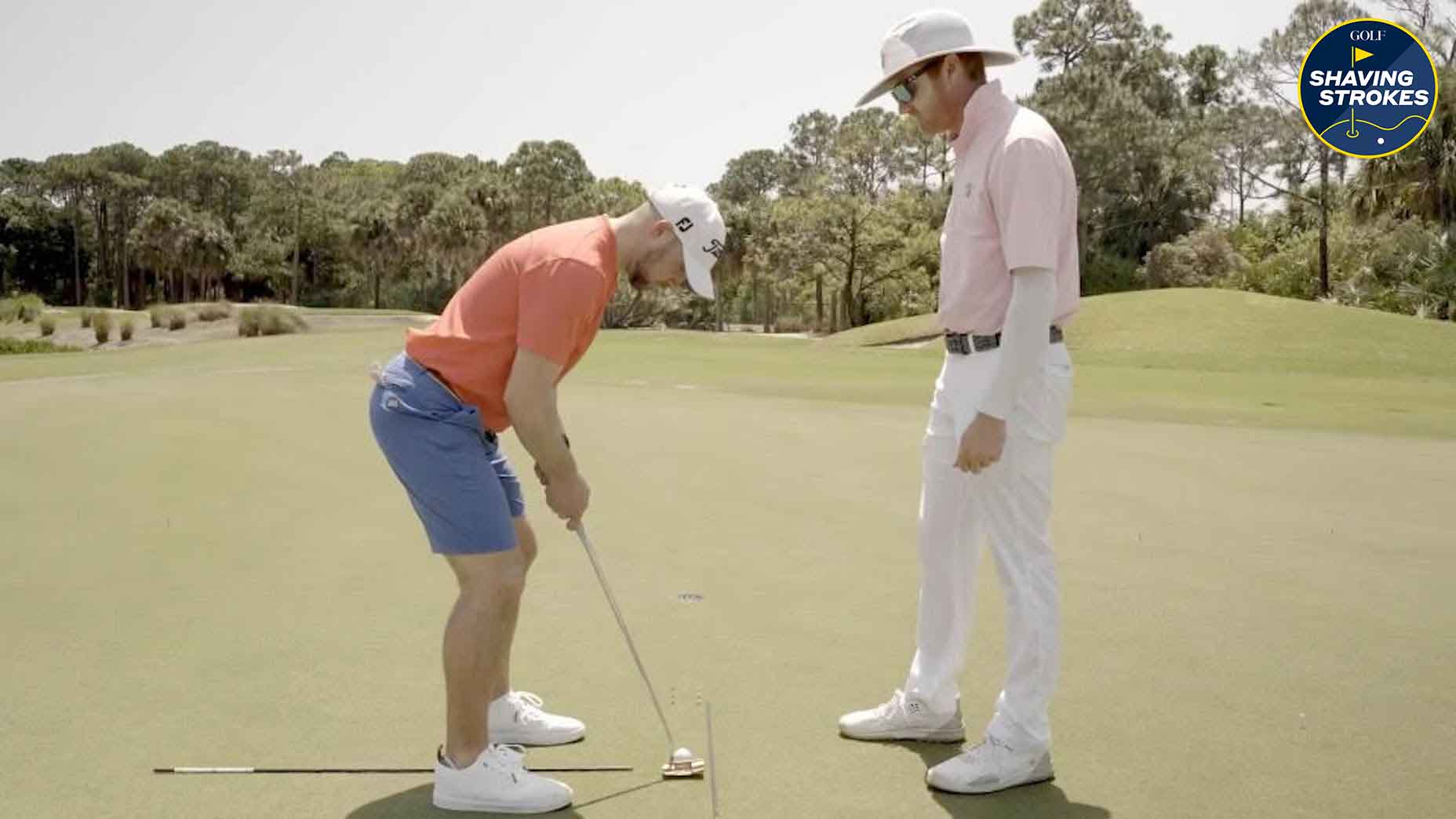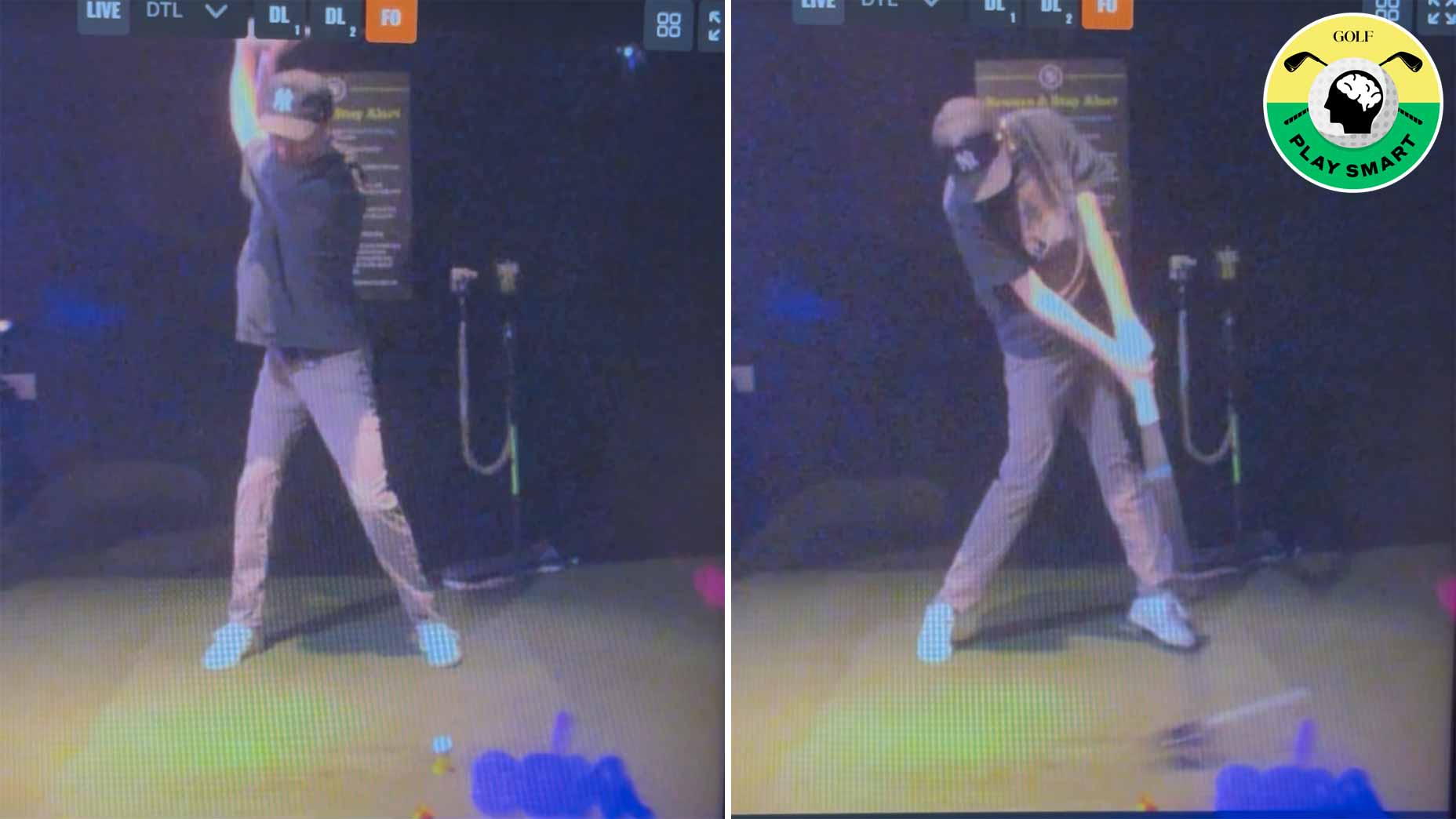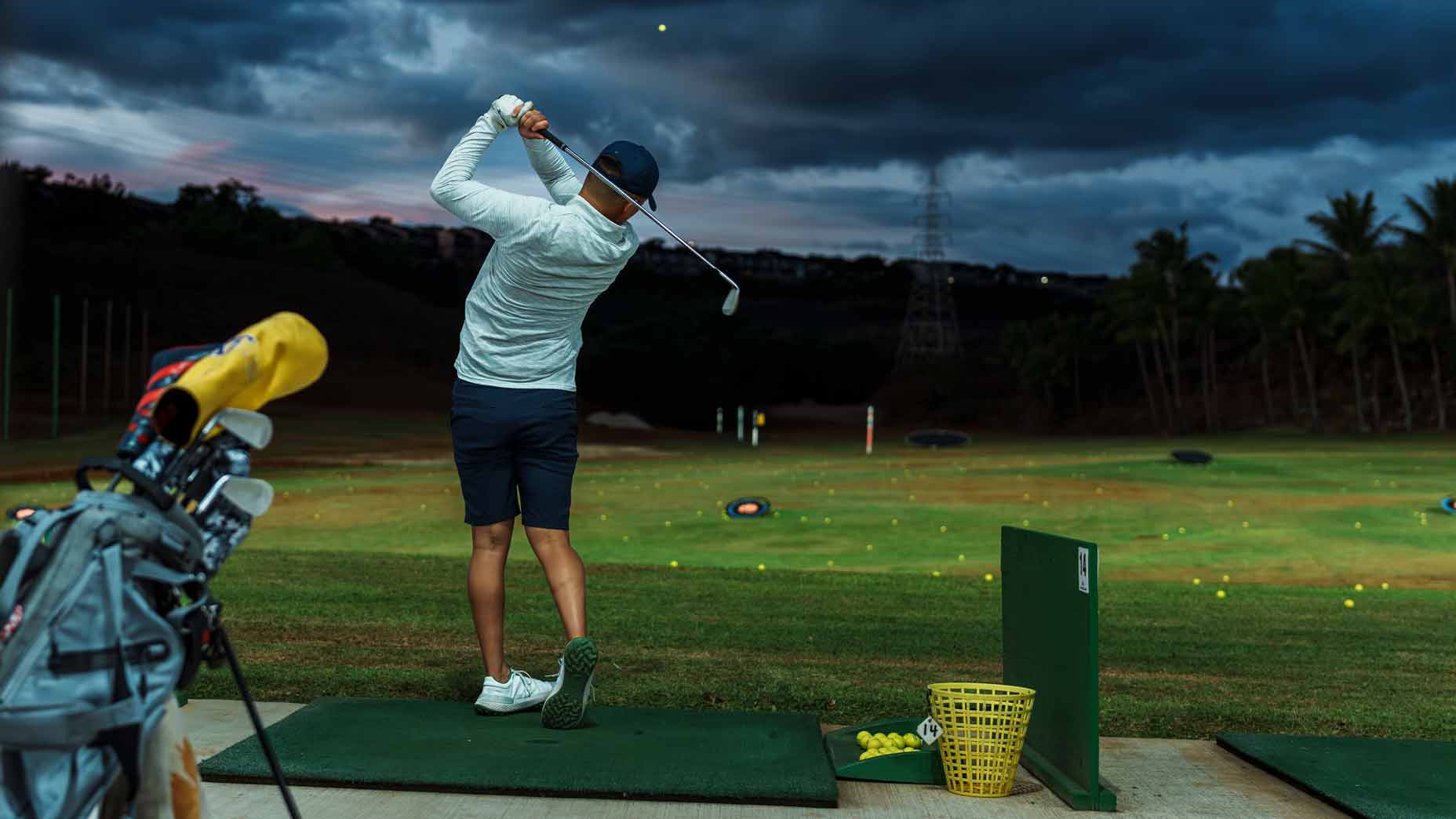Welcome to Shaving Strokes, a GOLF.com series in which we’re sharing improvements, learnings and takeaways from amateur golfers just like you — including some of the speed bumps and challenges they faced along the way.
Putting is such a tricky part of golf, isn’t it? Just when you feel improvement on your touch and distance control, you then realize how much work you need on your putting alignment — so it’s a never-ending grind to see positive results more consistently.
After getting a very nice (and very high-end) Bettinardi putter last year, my touch on the greens has been much-improved. And while I use my feet to find the slopes to help determine where to aim, I still have issues actually starting it on the right line.
Thankfully, I took a recent trip to Florida to synch up with a golf teacher buddy of mine named Jackson Koert, who’s one of the best in the business at teaching the short game.
Not only did Koert help clean up some flaws in my fundamentals and setup, but he also showed me an effective (yet intimidating) drill that helps identify the start line. You can see how it works below.
Try this drill to better identify your putting aim
Before addressing my ball, Koert reminds me the whole point of this drill is to help develop better fundamentals, which is the foundation for consistency.
As I stand over my ball, the first thing I look at is the gate he set up on the green, which is intended for me to hit my ball through. Naturally, this is a little intimidating, but I remind myself that this isn’t supposed to be easy.
Below, he explains how the drill works and why it’ll help improve my green-reading, putting aim, the distance from the ball, the ball position, alignment and putting speed.
Setting up the drill
The first step is to find a straight putt from about 6 feet, preferably flat or uphill. If you’re a right-handed golfer, put one alignment stick on the ground pointing directly at the right edge of the hole (target line), making sure you’re very specific on where it’s aimed.
Next, place a second alignment stick perpendicular to the target line stick — which is your ball-position stick — making sure there’s just enough room for your putter head to lie between. Simply put, creating a capital “T” with a little space between the alignment sticks.
Place the golf ball between the two sticks, having the back of it lined up with the ball position stick.
Now stick two tees into the ground, which should resemble a gate for the ball to roll through.
Addressing the ball
Upon addressing the ball, carefully match the line on your putter with the target line stick and check the angle of the face with the perpendicular stick. Once the putter is aligned perfectly to the middle of the hole, this will create your sense of feel for the proper aim.
The next step is to simply use your eyes to ensure you’re lined up properly.
Now settle into your posture at address.
If the station’s set up correctly, you’ll be able to perfect your putting aim by matching the line on the head of your putter with the angle of the face on either alignment stick. It’s also helpful to make sure that you can have the ball position in the same spot each time, which is an easy reference thanks to the second stick.
Track your start line
Now that you’re ready to hit some shots, make sure the ball’s in the middle of your stance and lined up to go through the gate. If you find yourself unable to roll it through the two tees, it’s likely a start line issue — meaning you’re either aimed wrong, or your face isn’t coming in square through impact.
Once you’re able to consistently roll the ball through the tees, though, it means you’ll be able to observe the start line of the golf ball, as well as some improved mechanics, like the length of your stroke.
These mechanics will have an effect on where your ball rolls for the start line.
By improving your putting aim, using a consistently good setup and rolling the ball down your intended line from 6 feet, you’ll be on your way toward becoming much better with the flatstick.











